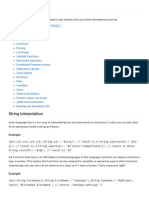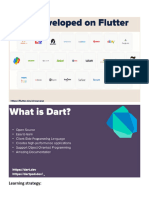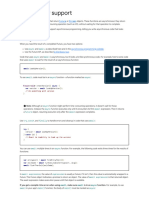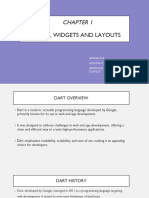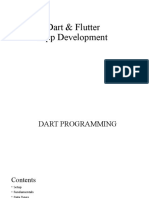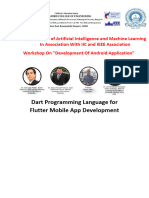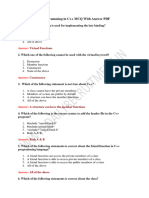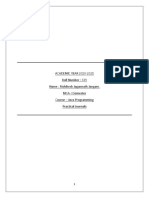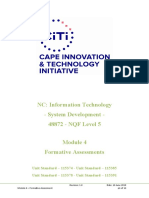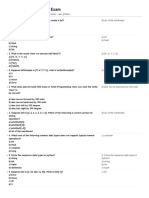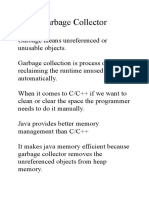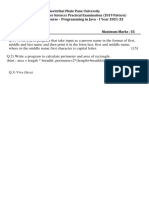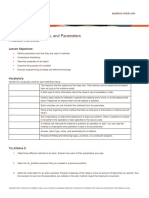0% found this document useful (0 votes)
19 views10 pagesDart Flutter Important
The document provides an overview of various Dart and Flutter programming concepts, including cascade notation, spread operators, null safety, and different Flutter build modes (Debug, Release, Profile). It also covers asynchronous programming with Futures and Streams, the use of isolates, and the implementation of functions with parameters and mixins. Additionally, it includes links to resources for Flutter development, such as Bloc Provider, JSON serialization, and handling radio buttons.
Uploaded by
pk5846361Copyright
© © All Rights Reserved
We take content rights seriously. If you suspect this is your content, claim it here.
Available Formats
Download as PDF, TXT or read online on Scribd
0% found this document useful (0 votes)
19 views10 pagesDart Flutter Important
The document provides an overview of various Dart and Flutter programming concepts, including cascade notation, spread operators, null safety, and different Flutter build modes (Debug, Release, Profile). It also covers asynchronous programming with Futures and Streams, the use of isolates, and the implementation of functions with parameters and mixins. Additionally, it includes links to resources for Flutter development, such as Bloc Provider, JSON serialization, and handling radio buttons.
Uploaded by
pk5846361Copyright
© © All Rights Reserved
We take content rights seriously. If you suspect this is your content, claim it here.
Available Formats
Download as PDF, TXT or read online on Scribd
/ 10



